By Rick VanSickle
I remember it well. The wind was howling off the Niagara Escarpment as busloads of wine journalists and dignitaries arrived at a tidy clearing in the middle of a young vineyard on the Twenty Mile Bench where a giant white tent had been erected.
It was the summer of 2002, and Vincor Canada was on a roll, buying wineries, vineyards and assets like a kid collecting candy on Halloween night. But this was different. Le Clos Jordanne was unlike anything else in Canada at the time. Burgundian-style Pinot Noirs and Chardonnays, meticulously crafted from grapes grown in mineral-rich estate vineyards, promised to lift the reputation of an industry desperate for attention on the world wine map.
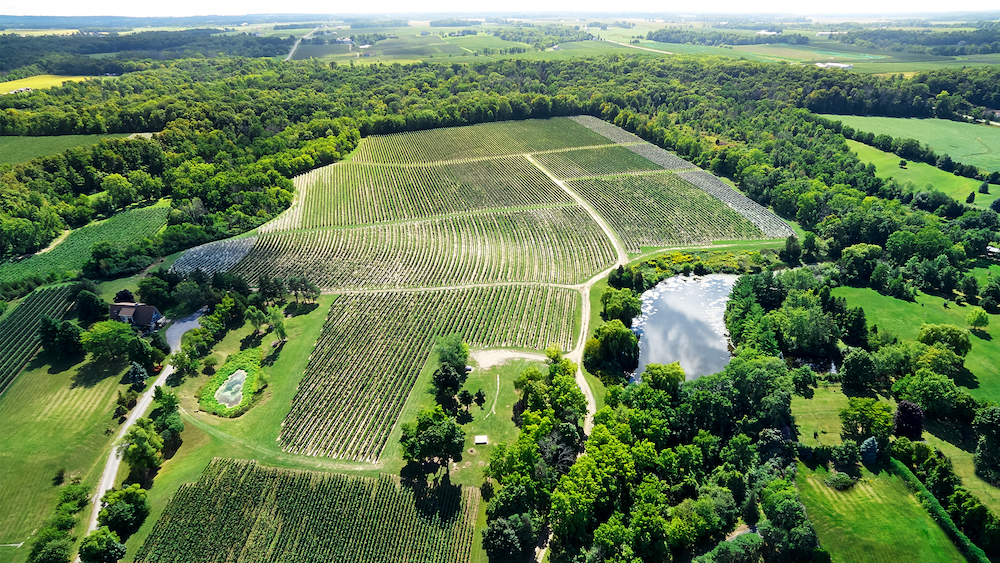
With gasps from many (myself included) who had gathered on that day in July 20 years ago, Vincor, along with its French partner Boisset, unveiled a Frank Gehry winery design that was to be built close to where we were standing. And it was breathtaking.
The Canadian-born Gehry described the futuristic winery roof as “a silver cloud floating over the vineyard with the winery spreading out beneath it.” It was to be sited in the centre of Le Clos Jordanne’s main namesake vineyard surrounded by an environmentally protected forest and woodlands that was hidden from view, some 1,500 feet from the nearest road. It would be the grandest of all wineries in Canada once it was completed by 2010.
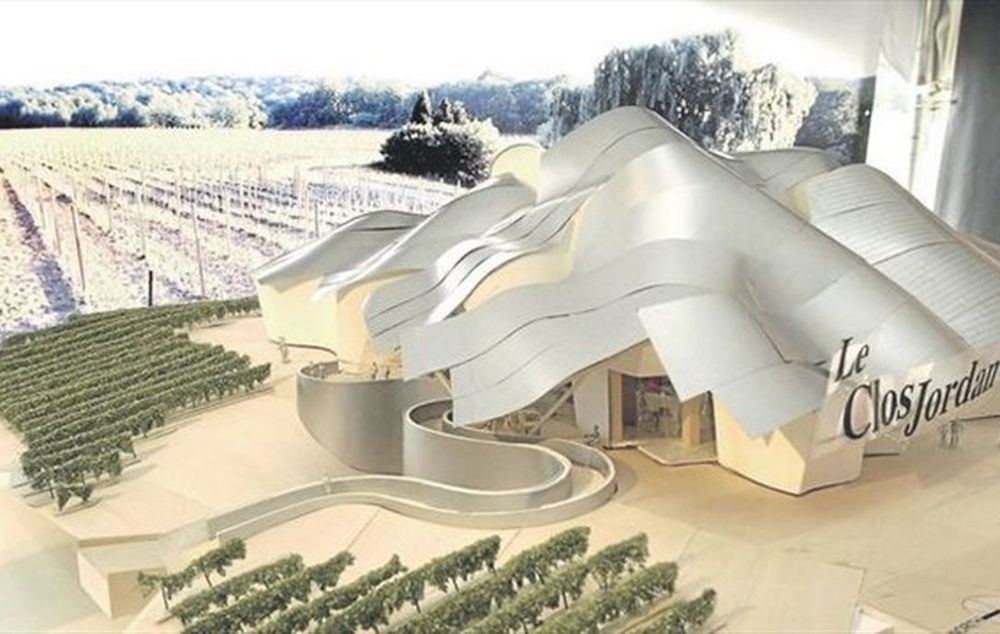
Zoom ahead to 2022, on a coolish fall day close to that the same spot, a lot of things have changed. The clearing in the Le Clos Vineyard where Gehry’s winery was to be built has long been planted over with more vines. That Gehry winery dream died long ago. Vincor no longer exists, acquired first by Constellation Brands and most recently rebranded as Arterra Canada after the Ontario Teachers’ Pension Plan bought the Canadian wine assets from Constellation.
Before Arterra was born and began restoring the brand, Constellation had killed off the Le Clos portfolio and the fruit was divvied up into various wines at Jackson-Triggs, Inniskillin and even Arterra branded wines. The final vintage of the old Le Clos, a full range of collectible Chardonnays and Pinot Noirs from village to the single vineyards and “grand cru,” would be 2012. It was a sad day when Le Clos was no longer.
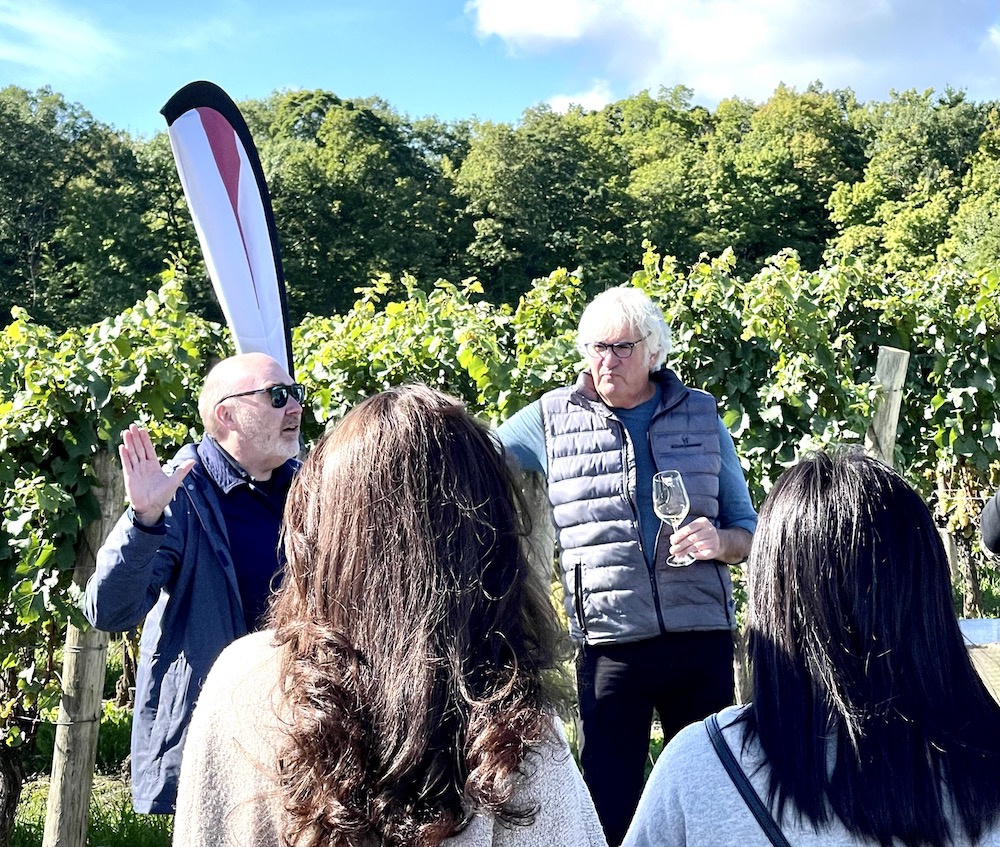
But here we are today, after Le Clos was revived by Arterra in 2019 with a 2017 vintage reboot, and Thomas Bachelder, the original winemaker, was back with the project.
It has been a slow and meticulous revival with the release first of the 2017 Le Clos Jordanne Le Grand Clos Pinot Noir and Chardonnay, followed next by the Jordan Village wines. On this day, another old friend was revealed and reunited with the Le Clos family.
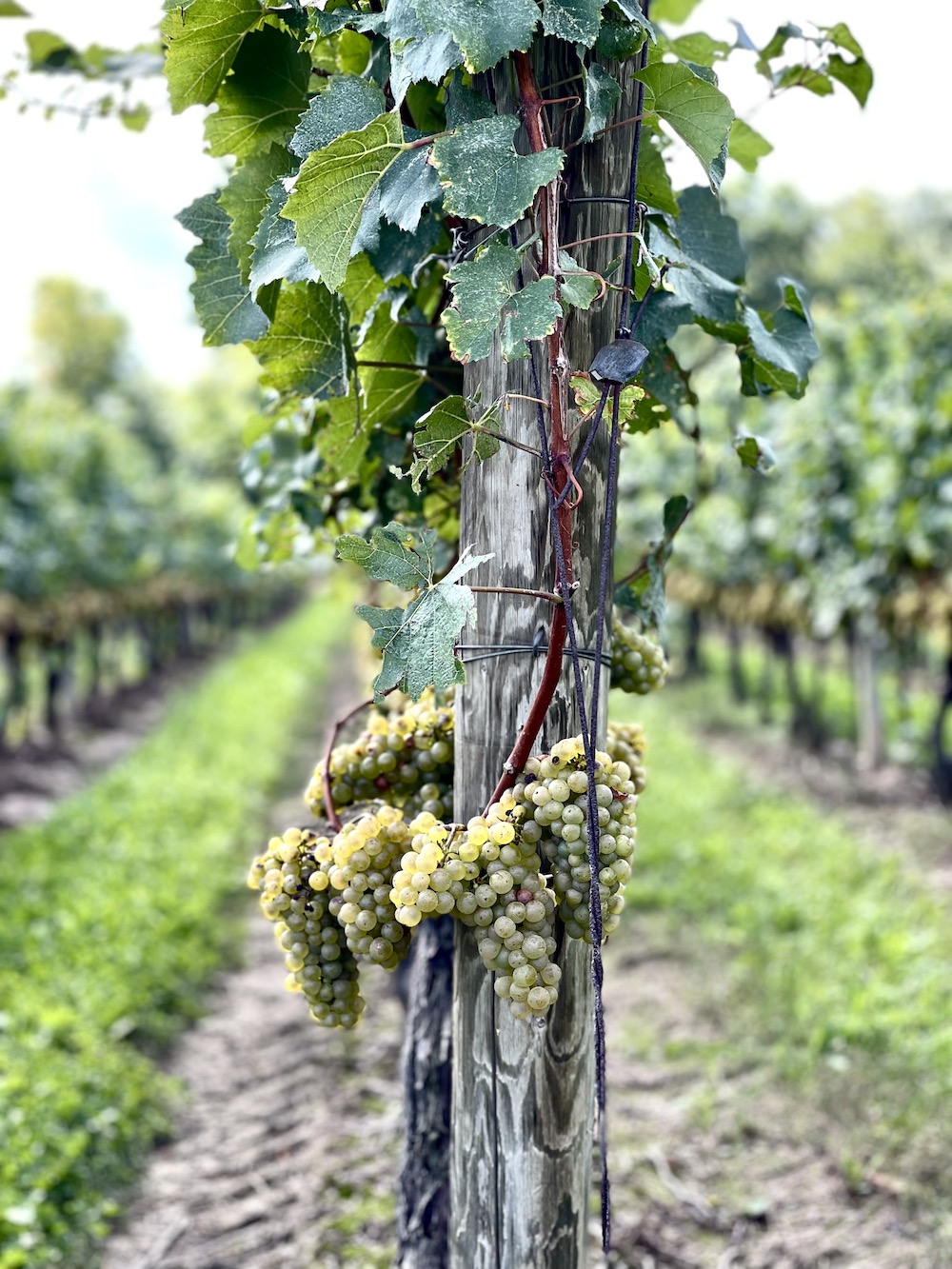
What many consider the most expressive of the Le Clos wines, the Claystone Terrace single-vineyard bottlings, are now in bottle and added to the growing brood. And, FYI, a Blanc de Noirs, a 100% Pinot Noir traditionally made sparkling wine, will be the next wine to join the fray.
Arterra Canada invited a group of us to the Le Clos vineyards to explore the terroir and taste the rebooted Claystone wines (including a pickup truck tasting in the vineyard), plus the 2020 Jordan Village Pinot and Chard and the Le Grand Clos Chardonnay and Pinot Noir 2020. Winemaker Bachelder, with assistance from Globe and Mail wine columnist Chris Waters, led us on a walk through the famed Claystone Vineyard before our tasting of the soon-to-be released wines.
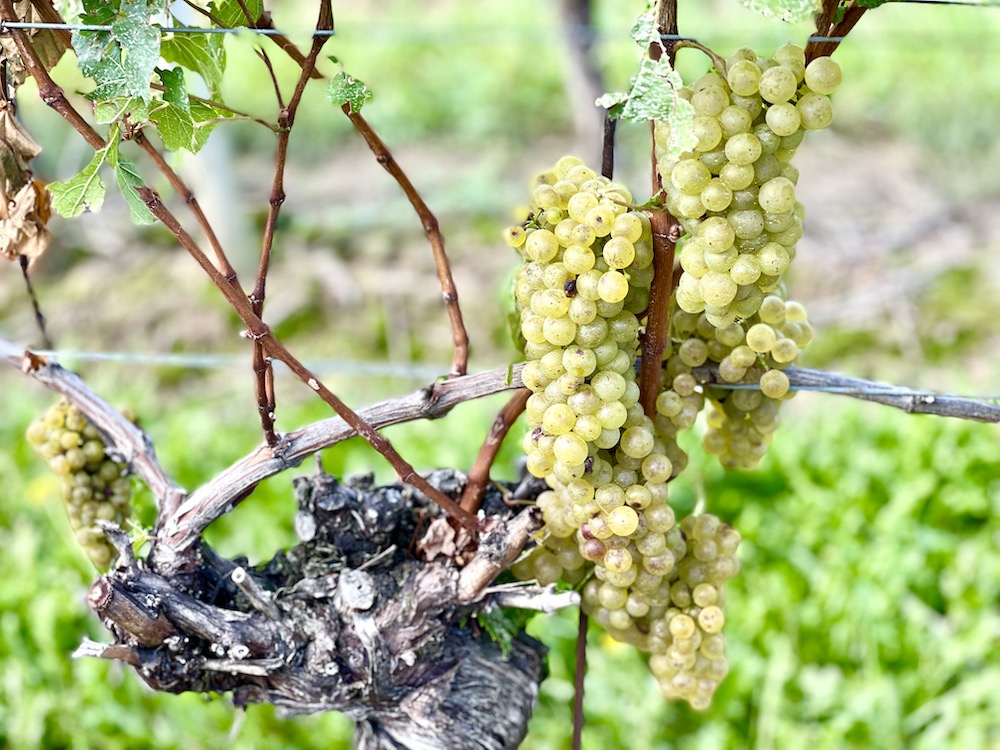
The Claystone single-vineyard Chardonnay and Pinot Noir were the second wines Bachelder made when Le Clos was originally launched. In 2009, the 2005 Claystone Terrace Chardonnay generated global recognition after winning first place in the Judgement of Montreal competition. Bachelder was named Winemaker of the Year at that year’s Ontario Wine Awards.
The Chardonnay from Claystone Terrace comes from the western part of the vineyard where the proportion of clay and limestone is well suited to the climate, which results in a long hang time so that the grapes can achieve optimal ripeness. Overall, this wine is typical of its terroir showing dominant minerality along with a powerful, ripe palate.
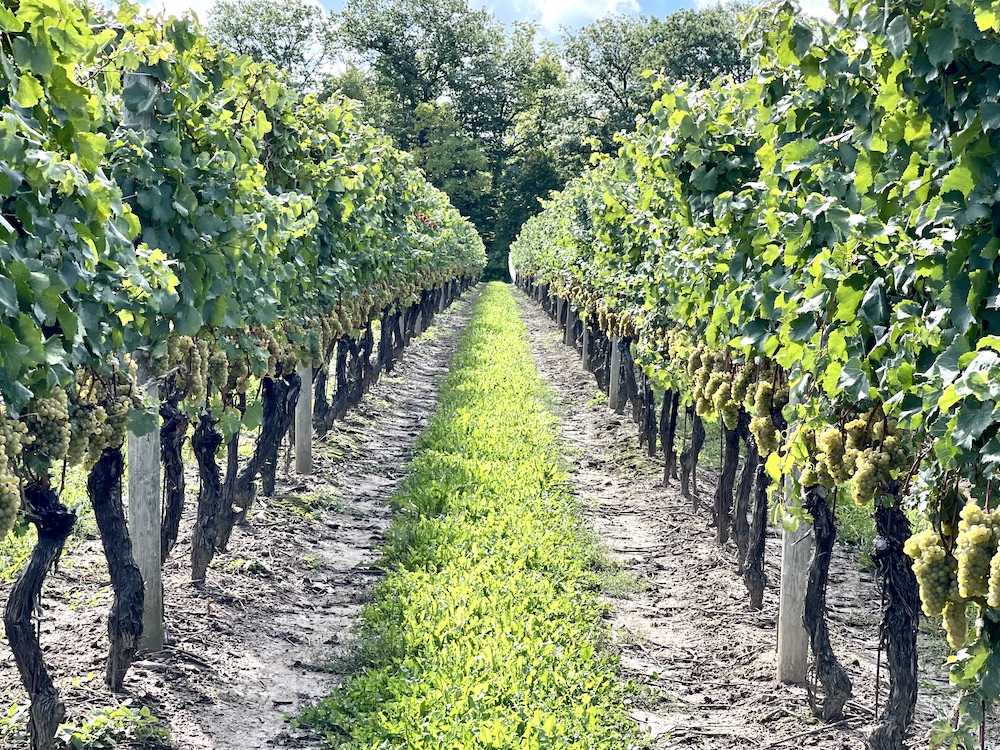
The Claystone Terrace Pinot Noir is sourced from the slope on the western part of the vineyard where the limestone-clay proportion is well balanced and there is a great exposure to the lake. Despite the rustic/muscular characteristics of the Pinot from Claystone, the wines typically show overall balance with strong limestone minerality and a pleasant, thick, and sappy texture creating much tension in the mouthfeel. Both the Chardonnay and Pinot require some cellaring to fully appreciate the wines.
The vineyard, hand-selected for its similarities in both climate and the clay and limestone-rich soil to Burgundy’s Côte d’Or, was planted with ultra-premium rootstock imported directly from Burgundy. The low yield-vines were harvested using an unhurried approach — hand-picked, hand-sorted and moved using a gravity flow system that ensures careful handling. These techniques, combined with Bachelder’s expertise in cool climate winemaking, have led to wines that truly raised the bar on quality for the Canadian wine industry.
The Tasting
Here’s what I liked from the tasting, which also included the new 2020 Village and Le Grand Clos wines, with food pairings by Smoke & Barrel Niagara.
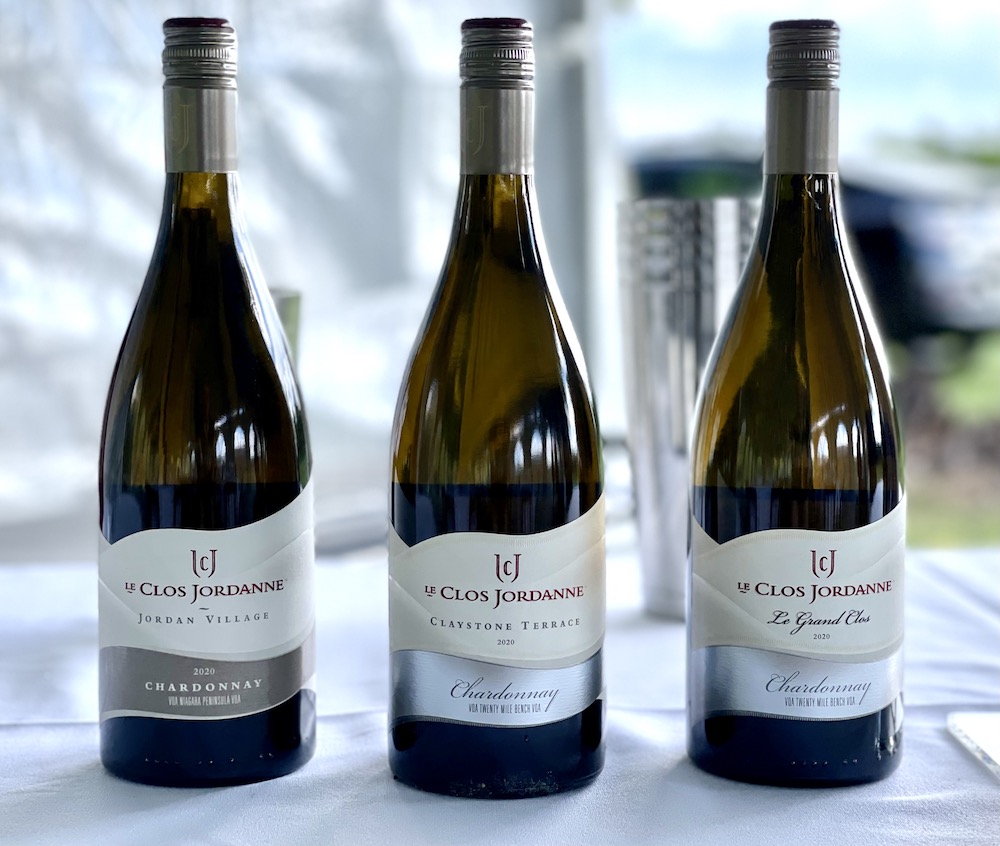
Le Clos Jordanne Jordan Village Chardonnay 2020 ($28, available now, 92 points) — Always a smart buy for quality at this price point, the Village Chardonnay has a rich and saline nose of ripe pear and apple with bergamot, elegant spice notes and freshness. It’s generous on the palate with pure, dense stone fruits, lemon tart, integrated spices, and length through the finessed finish. Paired with Chardonnay smoked salmon, cucumber, lemon, and horseradish cream (photo below).
Le Clos Jordanne Claystone Terrace Chardonnay 2020 ($48, Vintages Dec. 1, 94 points) — This is a thrilling Chardonnay from beginning to end with a savoury and saline nose of gunflint, fresh pear, apple skin, zesty citrus, lifted and elegant spice notes and all tightly wound and ready to further spread its wings with a bit of time in the bottle. There is depth and power to this sturdy, unique Chardonnay on the palate with more of that saline/flintiness, tension and verve driving the pear/quince fruits, lemon curd, subtle creamy notes, and texture from a deft touch with the oak. There is this lovely vein of savouriness through a finish that is long and finessed. A beautiful expression of terroir-driven Niagara Chardonnay. Paired with Niagara corn soup with cured foie gras and garden chive.
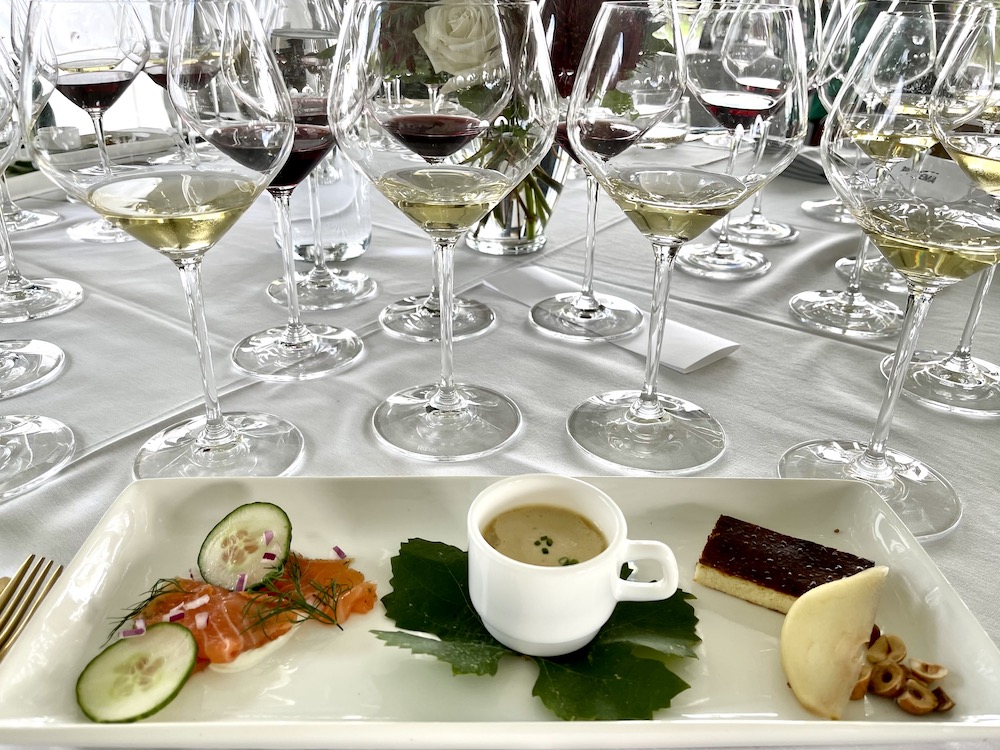
Le Clos Jordanne Le Grand Clos Chardonnay 2020 ($48, coming soon, 93 points) — A bit of fruit from the Talon Ridge Vineyard is blended into the Chardonnay from the “grand cru” Le Clos Jordanne Vineyard for this impressive top Chardonnay. A dominant note of chalky minerality is the first impression, then notes of fresh pear and quince, Meyer lemon and elegant spice notes. It’s generous and rich on the palate with ripe pear, lemon oil, golden apple, chalky minerality and spice in a complex and layered style with an echoing and fresh finish. A special Chardonnay. This was paired with Basque cheesecake with hazelnut and Chardonnay poached pear.
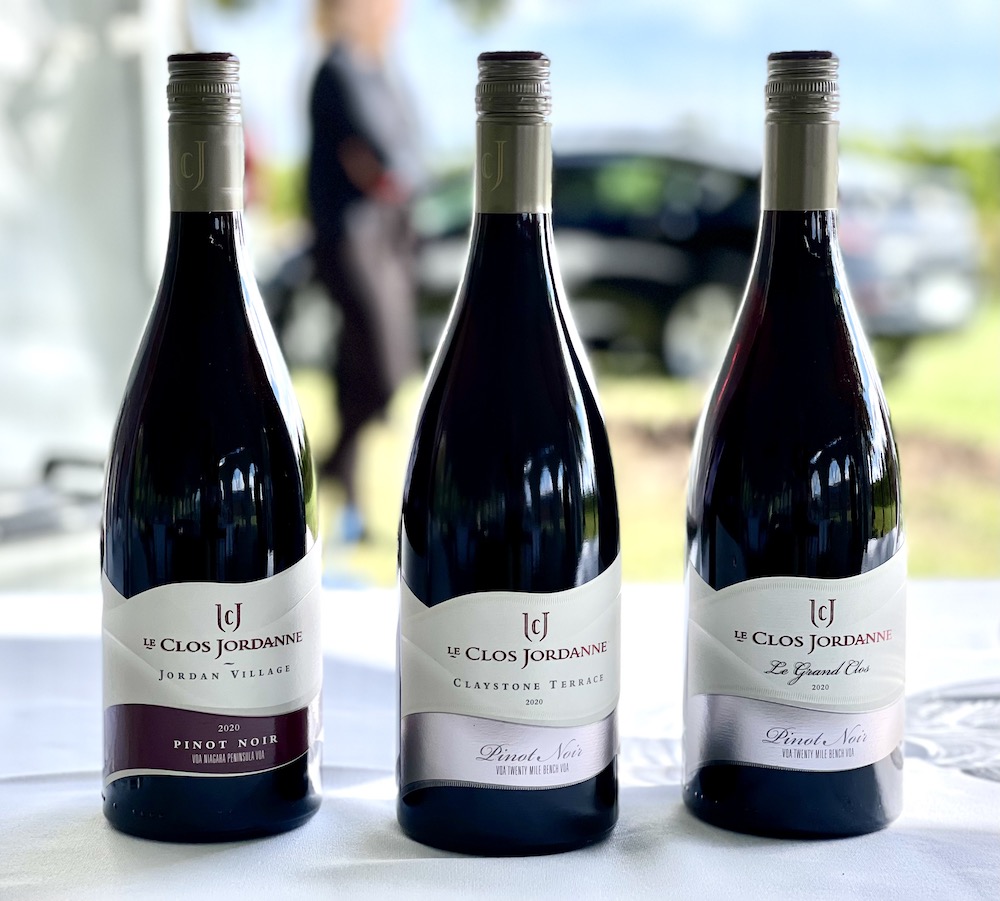
Le Clos Jordanne Jordan Village Pinot Noir 2020 ($28, available now, 91 points) — The Village Pinot has a perfumed nose with earthy/savoury notes, red currants, delicate spice notes, wild red berries and a touch of cassis. It’s rich, savoury, and generous on the palate with dark cherries, currants, wild blackberries and silky tannins and elegant spice notes. The finish is long and lifted. Can cellar 4+ years. This was paired with Ontario pork rillettes with onion and parsley salad and bay leaf mustard.
Le Clos Jordanne Claystone Terrace Pinot Noir 2020 ($48, Vintages Dec. 1, 93 points) — Claystone has always been tight and restrained in the early stages of its evolution, and that is the case here. Once it opens up there is a lovely perfumed minerality note on the nose with a melange of wild black raspberries, black cherries, red currants, soft spices and a floral note. There are added meaty notes on the palate with forest berries, crème de cassis, some ripe tannin structure and complexity. It’s deep and rich yet maintains grace and poise through a long and fresh finish. It’s tightly wound and will need time to fully reveal itself, but it will be well worth the wait. Paired with steak tartar with Kalamata olive, juniper, and wild berries.
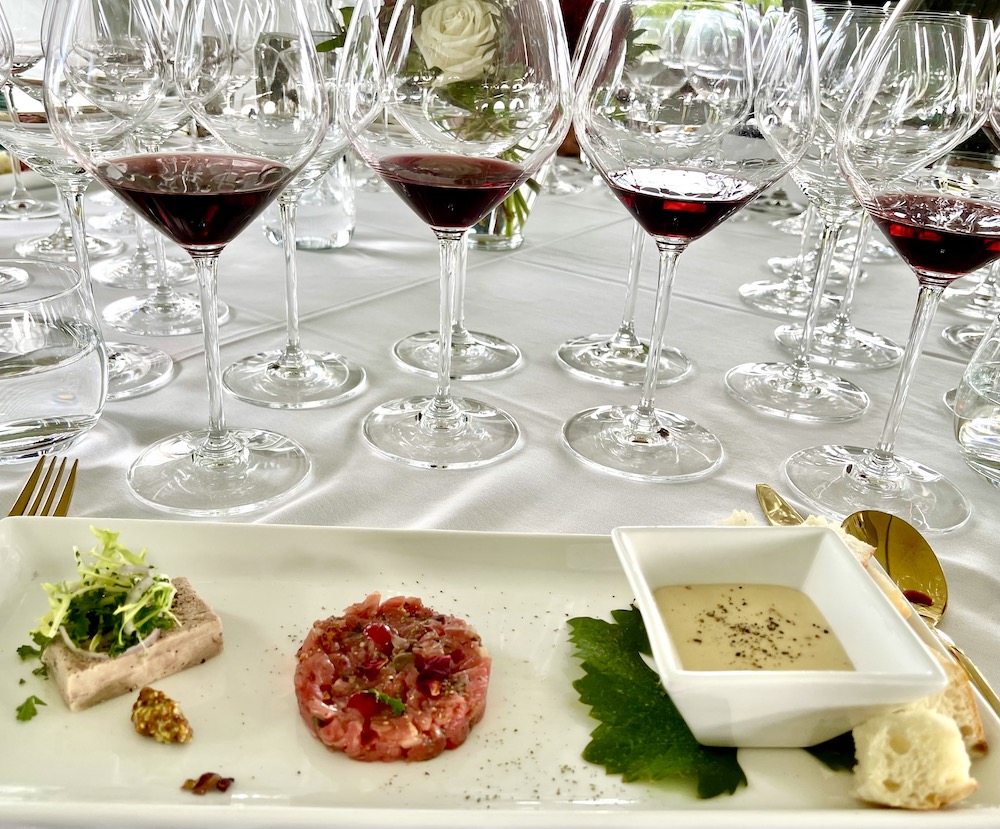
Le Clos Jordanne Le Grand Clos Pinot Noir 2020 ($48, coming soon, 93 points) — Compared to the Claystone bottling, this shows more elegance and less muscular qualities with a more delicate, perfumed nose of wild red berries, rose petals, mulberries, seamless spice notes and subtle earthiness. The black raspberries, dark cherries, mulberries, and rhubarb fruit are bolstered by fine grained tannins on the palate providing an elegant structure, integrated woodsy/spicy notes with a long, finessed finish. This should cellar for 6+ years. It was paired brilliantly with black truffle and Comfort Cream fondue with sourdough baguette.





Comment here